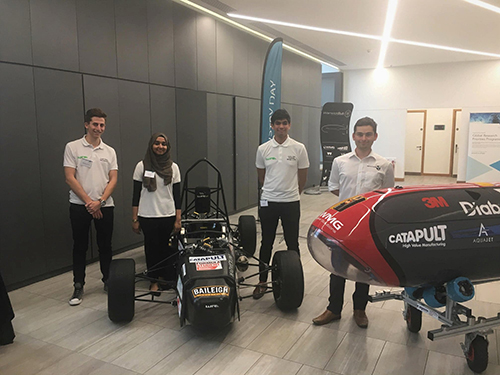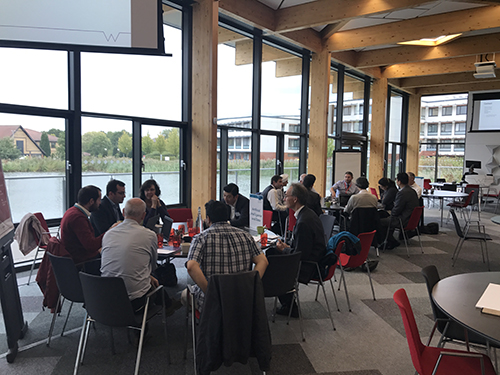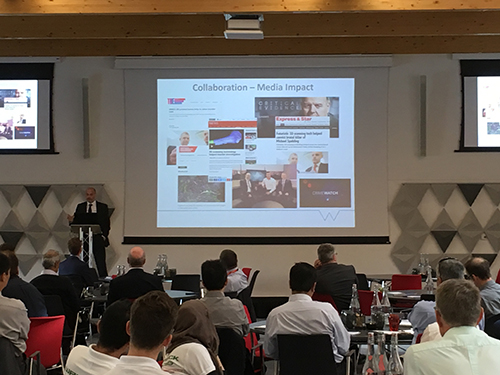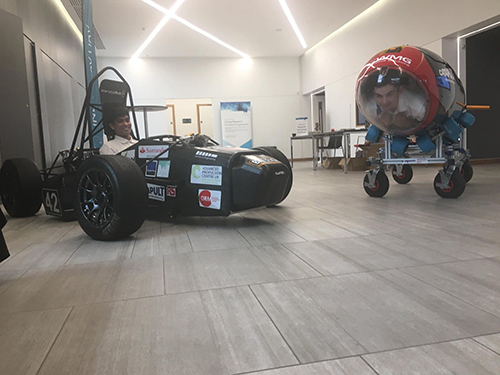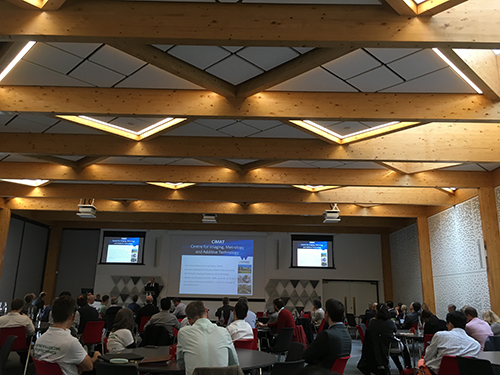Reflections on September 2018 Industry Day
Synthetic diamonds, bioplastics and micro CT scanning in criminal justice were just some of the topics covered at the Physical Sciences Industry Day on 19 September. The event, which attracted local, national and international businesses, focused on how collaborative industrial partnerships can further businesses’ research and development, as well as lead to meaningful and impactful change for academics, industry and society.
The morning consisted of a series of insightful talks from various academics and their industry partners.
The issue of the environmental impact of plastic has never been far from the news in recent years. Apart from the small amount that’s incinerated, every bit of plastic made over the last century is still present somewhere on our planet. The need for a sustainable and environmentally friendly alternative has never been greater, so the work that Biome Plastics has been carrying out with the University has been invaluable. Much of their research and development is focused on tackling the intrinsic synthesis of bioplastics that keeps costs high and limits performance. Working in partnership with the University’s Centre for Industrial Biotechnology and Biorefining, the company is currently running a project to investigate the possibility of using lignin as an alternative, bio-based source of aromatic chemicals.
From plastics to policing, another key highlight of the morning was a talk by DSC Mark Payne from West Midlands Police, who highlighted how working with the University had led to the successful application of micro CT scanning in criminal investigation. The use of 3D scanning technology helped speed up the criminal justice process in a 2014 murder investigation and ultimately help secure a conviction. Further work is planned between the University and West Midlands Police, with a view to creating 3D modelling of crime scenes, foot print analysis and crime scene scanning. The use of 3D imagery will help tell the story in court and immerse the jury in the scene itself.
Another highlight of the morning was a talk by Dr Gihan Mudalige from the department of Computer Science and his Rolls Royce counterpart, Chief of High Performance Computing, Yoon Ho. Gihan was awarded a Rolls Royce Society Fellowship to conduct research into high performance computing and simulation and modelling of jet engine parts and turbine blades. The overarching aim is to achieve full engine simulation, with all components simulated digitally before real-world use.
The application of synthetic diamonds for use in precision machinery cutting tools, high energy particle detectors, water treatment electrodes, acoustics and electronics, also formed a key part of the morning’s talks. In collaboration with the University, Element Six conducts sophisticated synthetic diamond research from its world-class development facility near Oxford where it creates synthetic diamond and related supermaterial products for customers across the globe. Element Six has even sponsored Warwick PhD students – many of whom have subsequently been recruited by the company.
Similarly, many former PhD students have been recruited by Anglo–Swedish pharmaceutical giant AstraZeneca, who also spoke at the event. The company continues to work closely with the University to conduct pioneering research into areas such as drug interactions and drug development in order to make a meaningful difference to patients’ lives.
The afternoon saw a range of well-attended tours around various research and development facilities, as well as a series of subject-specific networking tables.
The networking tables provided delegates with the opportunity to exchange ideas and information about the grand challenges of the Government’s Industrial Strategy, namely data and artificial intelligence, clean growth, the future of mobility and ageing society.
Meanwhile, the tours showcased just a fraction of some of the cutting edge facilities that industrial partners of the University can gain access to.
More than a dozen new potential projects and links were identified during the afternoon, with more expected to follow in the coming weeks and months.
Enthused by what they had heard and seen, many delegates stayed beyond the event’s official closing time to continue their networking and discussions across a spectrum of topics.
The day illustrated how the University has been critical in furthering the research and development of various high profile organisations, whilst the close collaborative working relationships continue to help our PhD students flourish and grow into the scientists of tomorrow.
